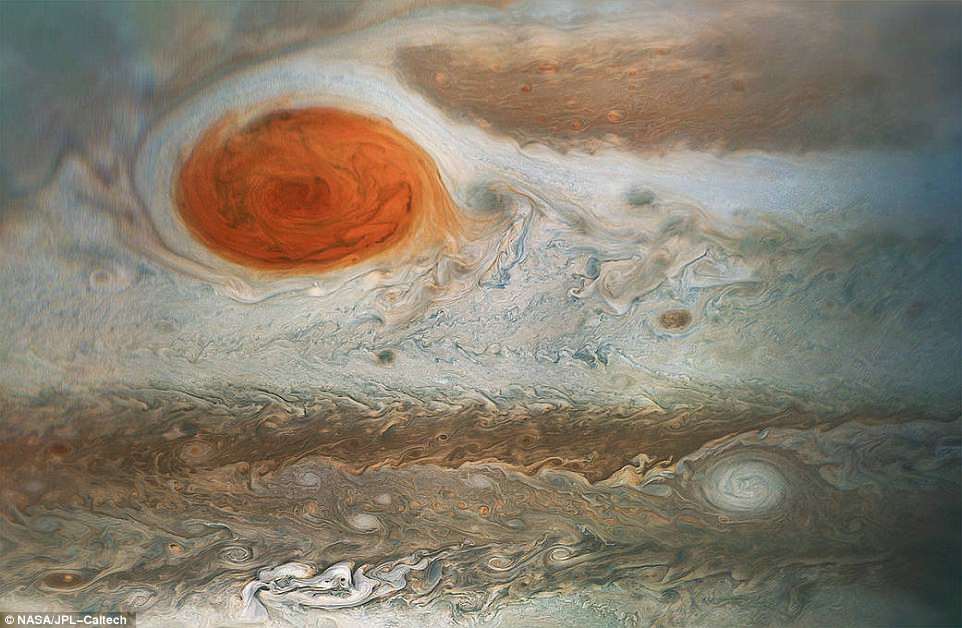
Scientists have for the first time detected water clouds deep inside the Great Red Spot on Jupiter.
The discovery inside the centuries-old storm, larger than planet Earth, sheds new light on how Jupiter developed – and if life could, or has ever, existed on it.
It reveals water on Jupiter is far more common that thought.
‘The discovery of water on Jupiter is important in many ways,’ said Clemson University astrophysicist Máté Ádámkovics.
‘Our current study focused on the red spot, but future projects will be able to estimate how much water exists on the entire planet,
‘And, finally, where there’s the potential for liquid water, the possibility of life cannot be completely ruled out.
‘So, though it appears very unlikely, life on Jupiter is not beyond the range of our imaginations.’
The research also shows the planet may have migrated to its current location.
‘Based upon all the exoplanets now known, it appears as if planets may form at a different place and then migrate in and/or out to where we see them today,’ said Imke de Pater, a UC Berkeley professor of astronomy and a co-author of a report that appeared this month in the Astronomical Journal.
‘So what happened in our solar system? Did Jupiter form beyond where Neptune is today?’
By peering into Jupiter’s famous Great Red Spot with thermal-sensitive telescopes, NASA’s Gordon Bjoraker said the space agency found chemical signatures of water in the planet’s clouds.
The pressure of the water, the researchers concluded, combined with their measurements of another oxygen-bearing gas, carbon monoxide, imply that Jupiter has 2 to 9 times more oxygen than the Sun.
The finding supports theoretical and computer-simulation models that have predicted abundant water (H2O) on Jupiter made of oxygen (O) tied up with molecular hydrogen (H2).
It also raises the possibility of what NASA calls ‘exotic life’.
The US space agency has previously said: ‘at certain altitude’s in Jupiter’s atmosphere, there do exist chemicals that are necessary for some sort of exotic life form.
‘The temperatures are warm enough and flashes of lighting could provided energy that drives the chemical reactions needed for life.’
The Great Red Spot is full of dense clouds, which makes it hard for electromagnetic energy to escape and teach astronomers anything about the chemistry within.
























